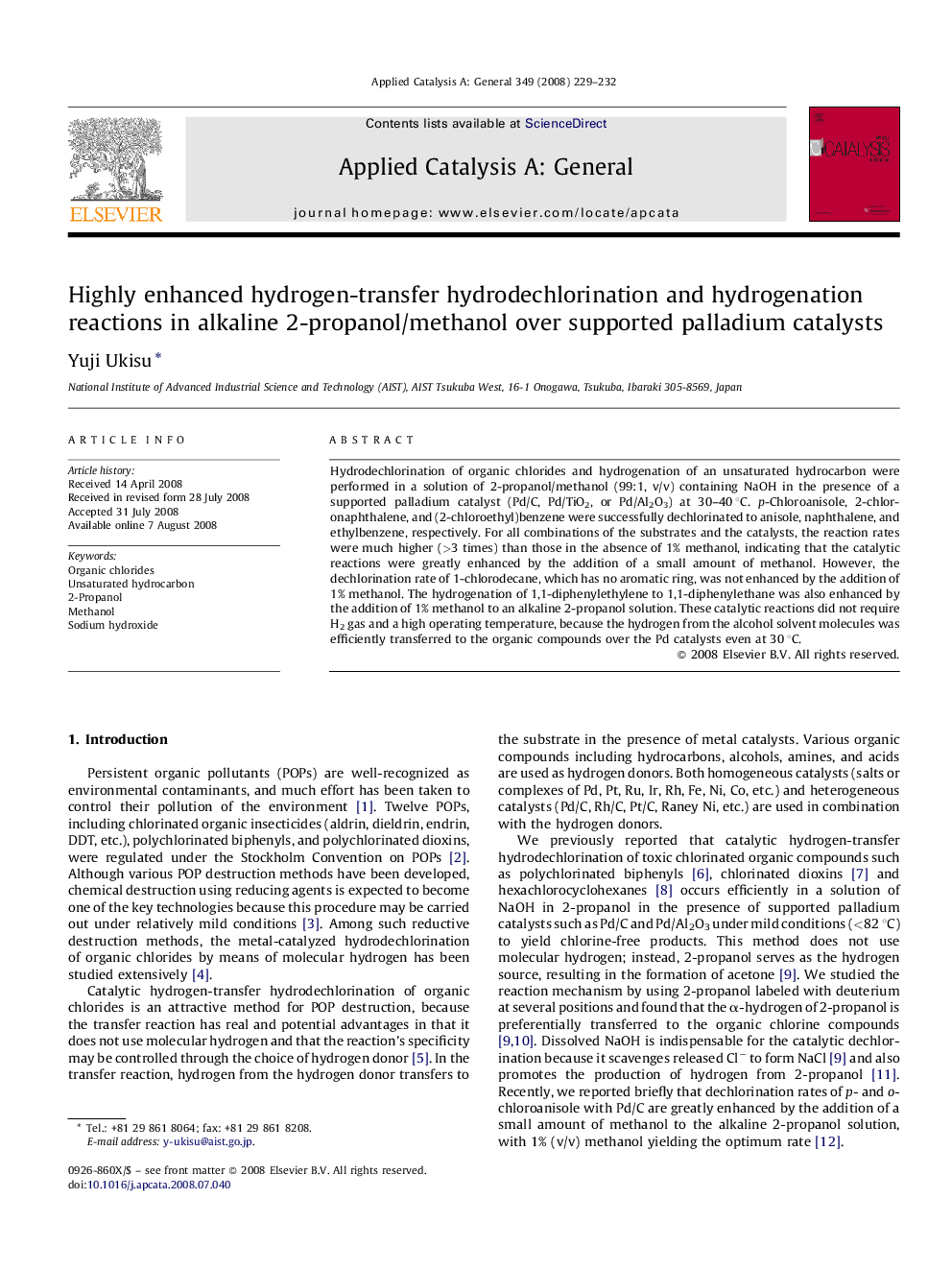| Article ID | Journal | Published Year | Pages | File Type |
|---|---|---|---|---|
| 42827 | Applied Catalysis A: General | 2008 | 4 Pages |
Hydrodechlorination of organic chlorides and hydrogenation of an unsaturated hydrocarbon were performed in a solution of 2-propanol/methanol (99:1, v/v) containing NaOH in the presence of a supported palladium catalyst (Pd/C, Pd/TiO2, or Pd/Al2O3) at 30–40 °C. p-Chloroanisole, 2-chloronaphthalene, and (2-chloroethyl)benzene were successfully dechlorinated to anisole, naphthalene, and ethylbenzene, respectively. For all combinations of the substrates and the catalysts, the reaction rates were much higher (>3 times) than those in the absence of 1% methanol, indicating that the catalytic reactions were greatly enhanced by the addition of a small amount of methanol. However, the dechlorination rate of 1-chlorodecane, which has no aromatic ring, was not enhanced by the addition of 1% methanol. The hydrogenation of 1,1-diphenylethylene to 1,1-diphenylethane was also enhanced by the addition of 1% methanol to an alkaline 2-propanol solution. These catalytic reactions did not require H2 gas and a high operating temperature, because the hydrogen from the alcohol solvent molecules was efficiently transferred to the organic compounds over the Pd catalysts even at 30 °C.
Graphical abstractHydrodechlorination of organic chlorides and hydrogenation of an unsaturated hydrocarbon were performed in a solution of 2-propanol/methanol (99:1, v/v) containing NaOH over a supported palladium catalyst (Pd/C, Pd/TiO2, or Pd/Al2O3) at 30 °C. The added methanol greatly enhanced the reaction rates. In these catalytic reactions, the hydrogen in 2-propanol was efficiently transferred to the organic compounds over the Pd catalysts.Figure optionsDownload full-size imageDownload as PowerPoint slide
